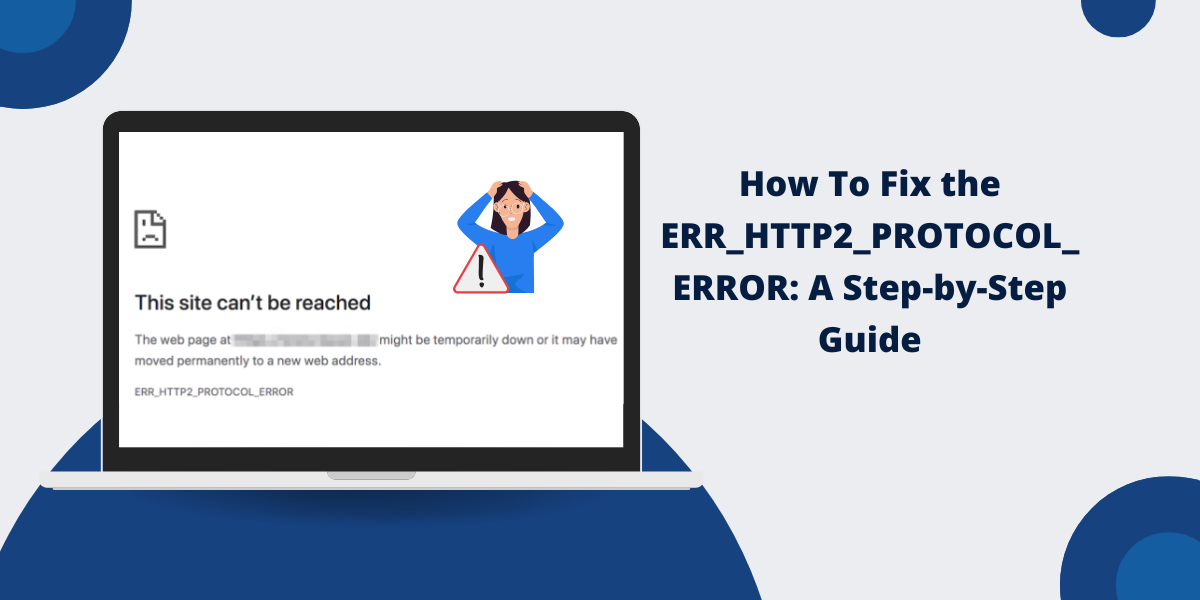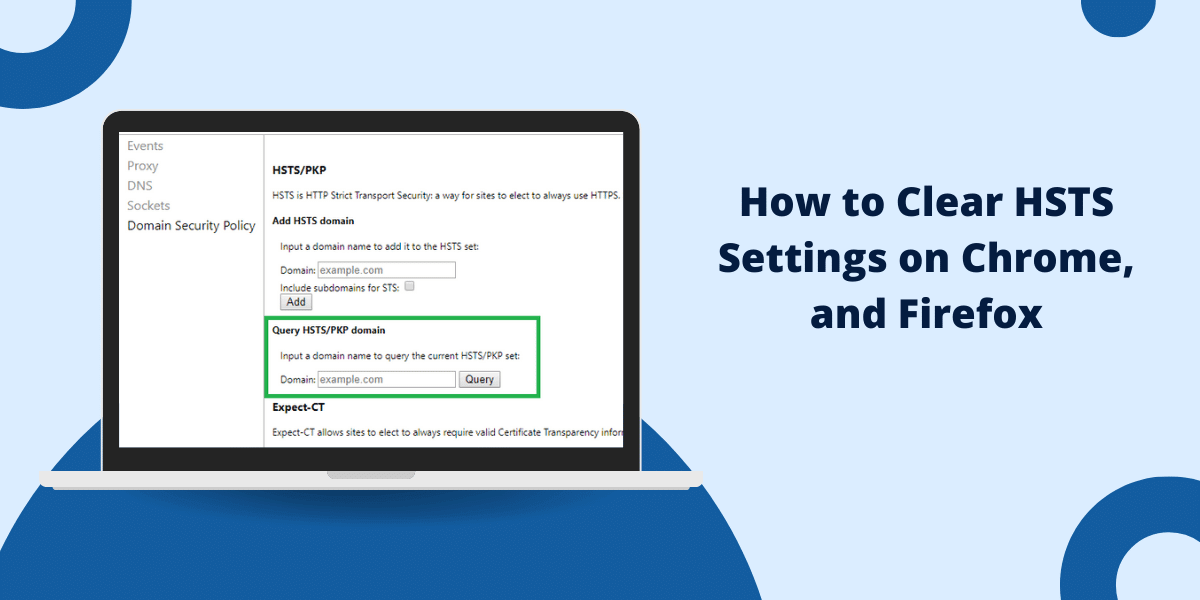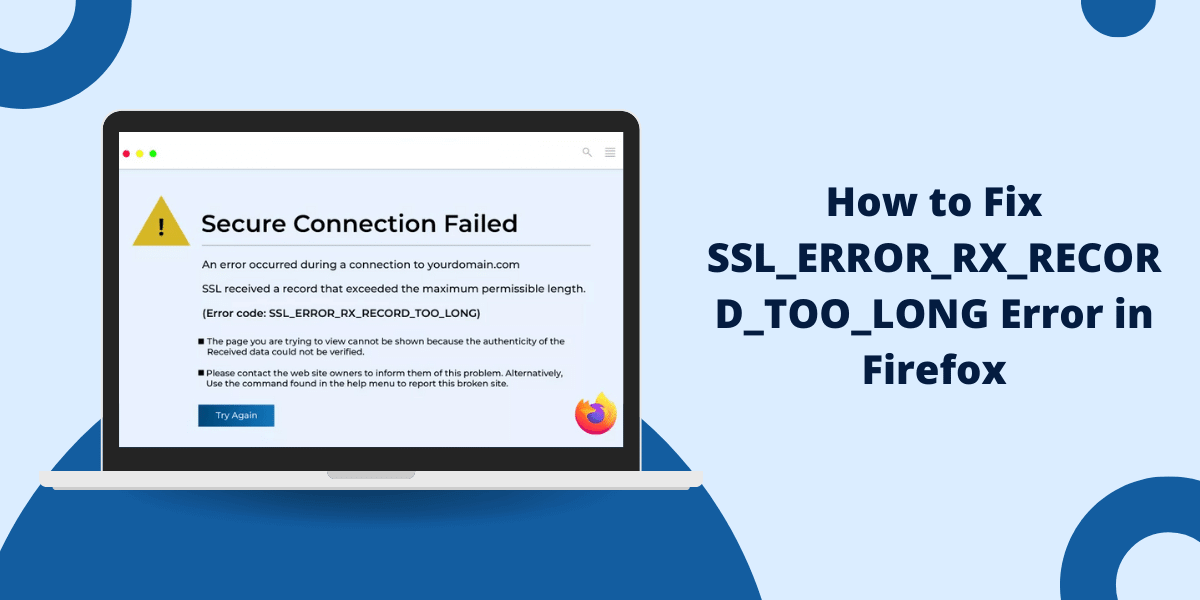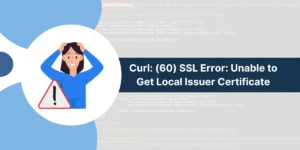What Does ERR_HTTP2_PROTOCOL_ERROR Mean?
The ERR_HTTP2_PROTOCOL_ERROR is a connection error that occurs when there is a problem with the HTTP/2 protocol communication between your browser and the web server. This error appears when the browser cannot establish or maintain a proper HTTP/2 connection.
Common causes include server configuration issues, network problems, outdated browser software, or corrupted browser data. Users can fix this error by clearing browser cache, updating their browser, disabling antivirus temporarily, or switching to HTTP/1.1.
In most cases, simple browser troubleshooting steps will resolve the ERR_HTTP2_PROTOCOL_ERROR and restore normal website access.
What are the Common Causes of ERR_HTTP2_PROTOCOL_ERROR
Before jumping into the solutions, it’s crucial to understand what might trigger this error. Knowing the root cause can save you time and effort when troubleshooting. Here are some of the most common culprits:
- Outdated Web Browser: Older browser versions might not fully support HTTP/2 protocols.
- Misconfigured Server Settings: Issues on the server side—such as SSL/TLS misconfigurations—can lead to protocol errors.
- Third-Party Extensions: Browser plugins or extensions like ad blockers can interfere with HTTP/2 communication.
- Corrupted Cache or Cookies: Temporary files stored on your browser may become corrupted over time.
- Firewall or Antivirus Software: Overzealous security software might block HTTP/2 connections.
- Network Issues: Unstable or poorly configured networks can interrupt communication between the browser and server.
7 Proven Steps To Fix ERR_HTTP2_PROTOCOL_ERROR
- Update Your Browser
- Clear Cache and Cookies
- Disable Problematic Extensions
- Check Your Firewall or Antivirus Settings
- Investigate Server-Side Issues
- Switch to a Different Network
- Reset Your Browser Settings
Step 1: Update Your Browser
An outdated browser is frequently the culprit behind HTTP/2 errors. Developers regularly release updates to address bugs, improve performance, and enhance compatibility with modern web protocols.
Steps to Update Google Chrome Browser
- Open Chrome and click on the three-dot menu in the upper-right corner.
- Navigate to Help > About Google Chrome.
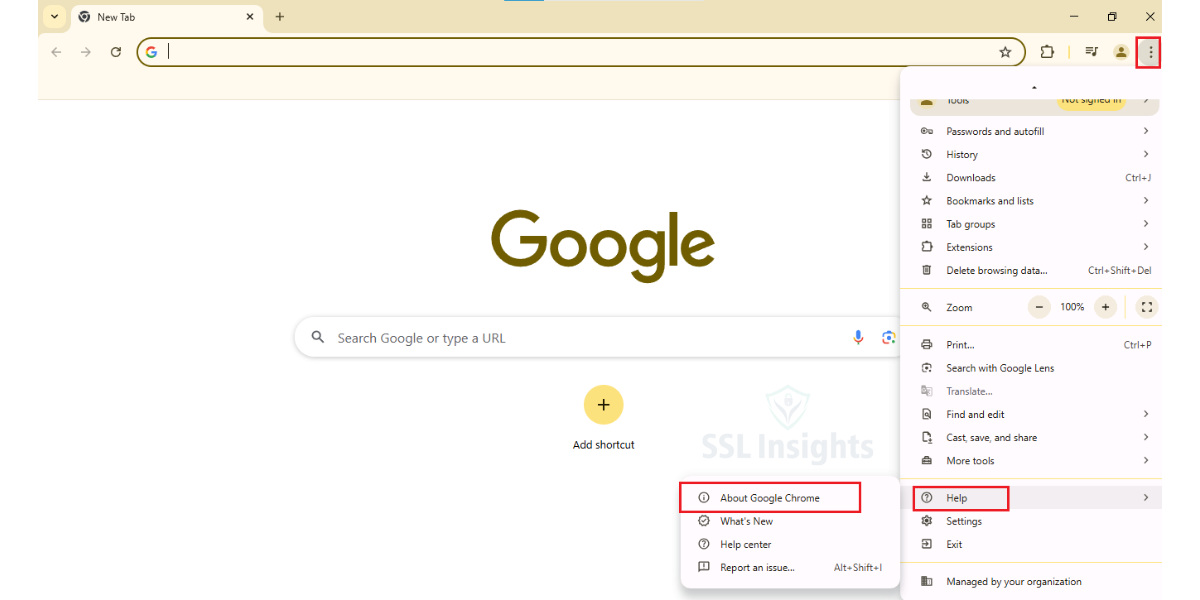
- Chrome will automatically check for updates and install them if available
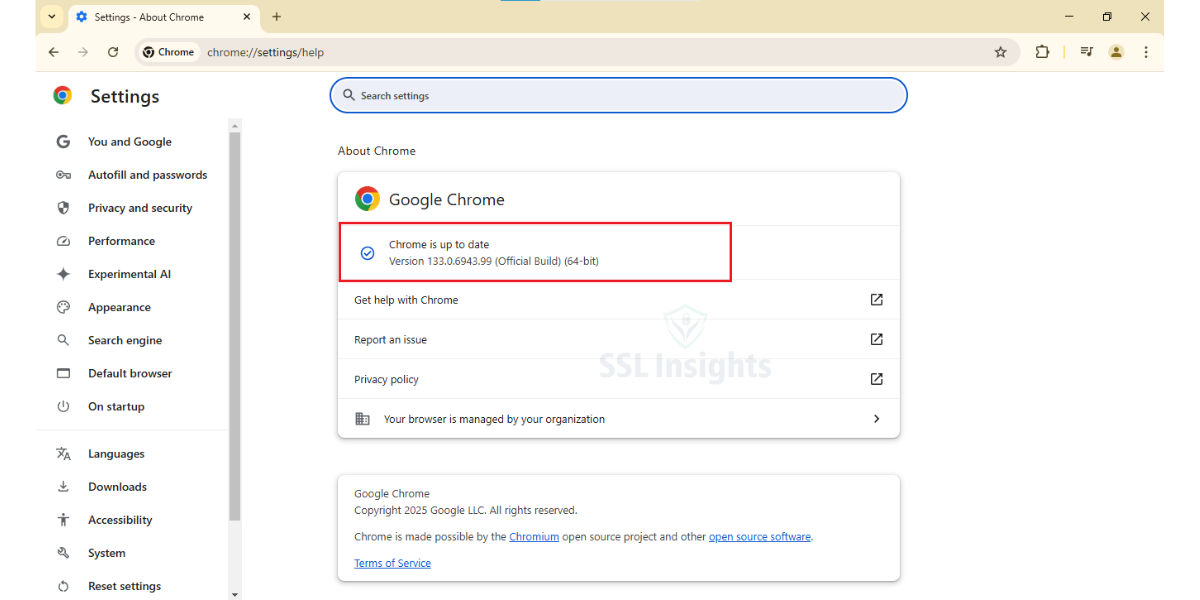
- Click on Relaunch button (if updated).
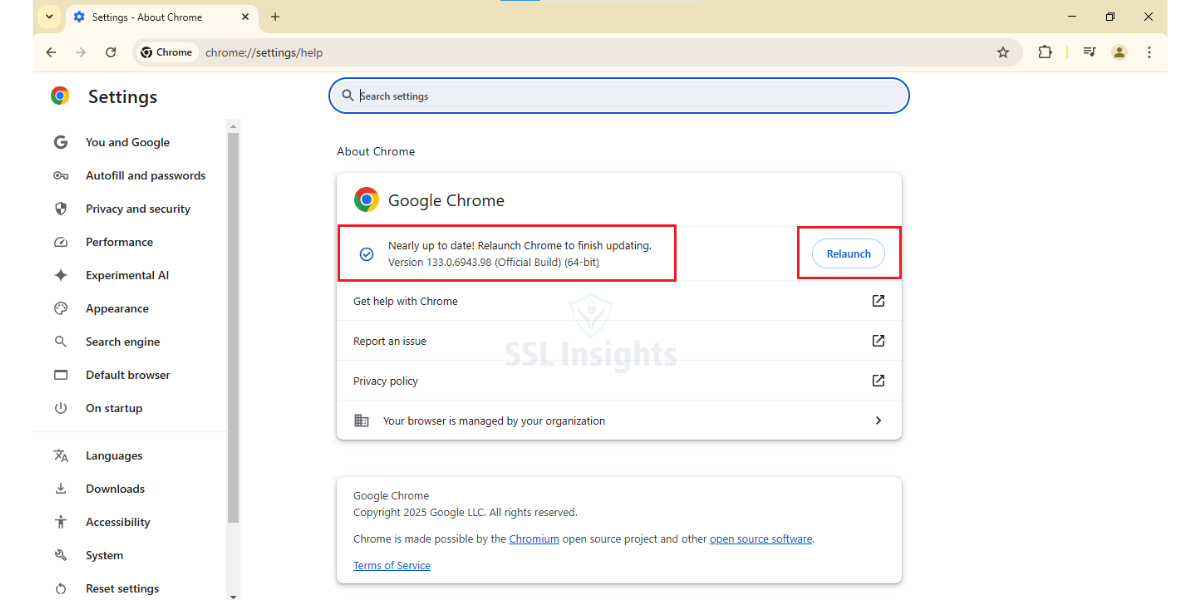
- Restart your browser and revisit the website.
Steps to Update Mozilla Firefox Browser
- Click on the hamburger menu in the upper-right corner.
- Go to Help > About Firefox.
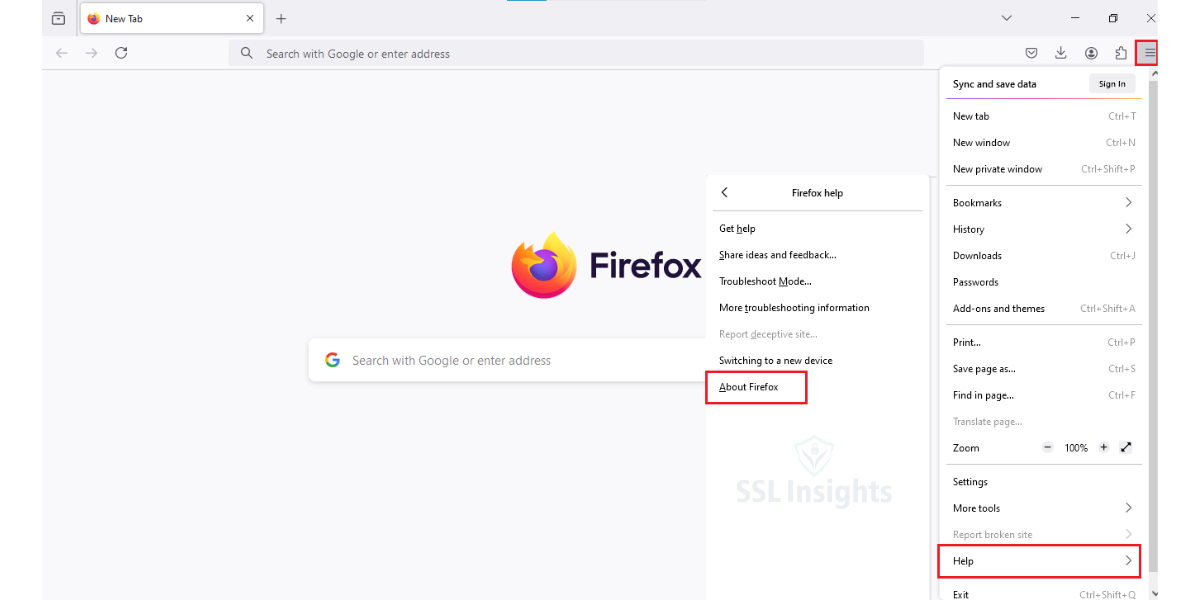
- Firefox will check for updates and Restart to Update Firefox if update available.
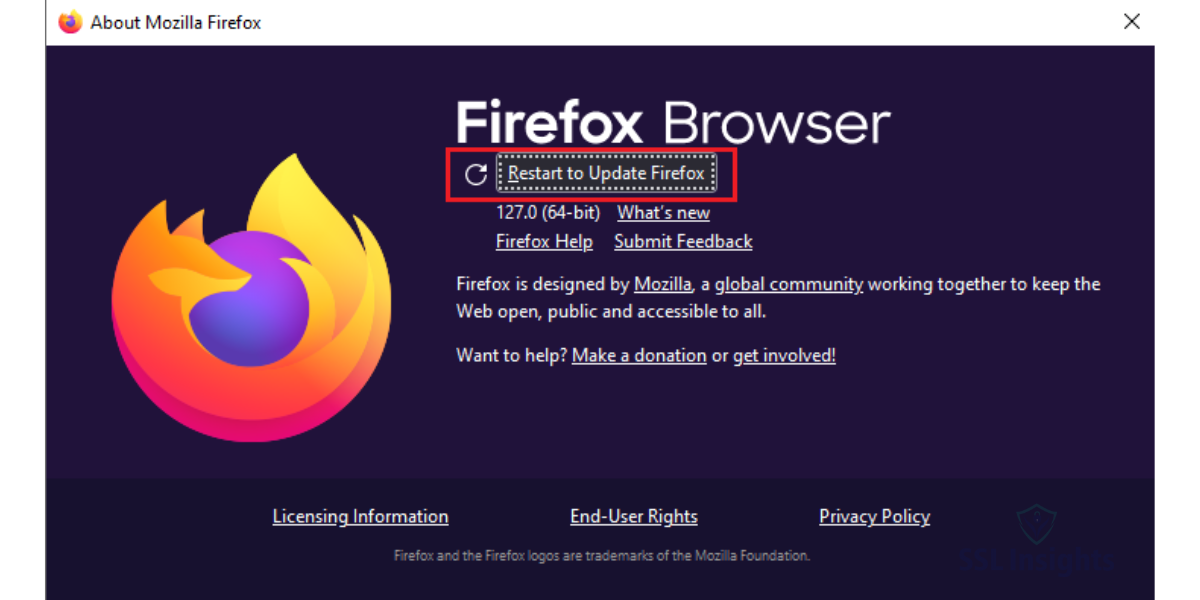
- Firefox updated version looks like:
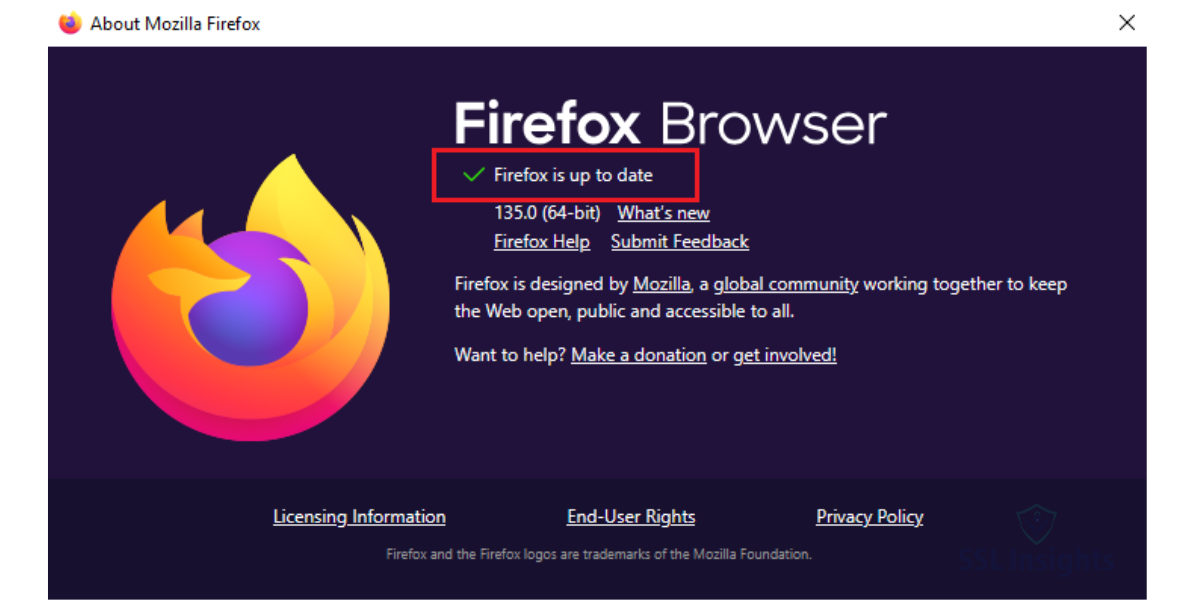
- Reopen the browser to see if the error persists.
Step 2: Clear Cache and Cookies
Corrupted cache and cookies are often behind browser errors. Clearing them out can resolve the issue.
Steps to Clear Cache and Cookies on Google Chrome Web Browser
- Go to Settings > Privacy and Security > Clear Browsing Data OR directly past chrome://settings/ in chrome address bar.
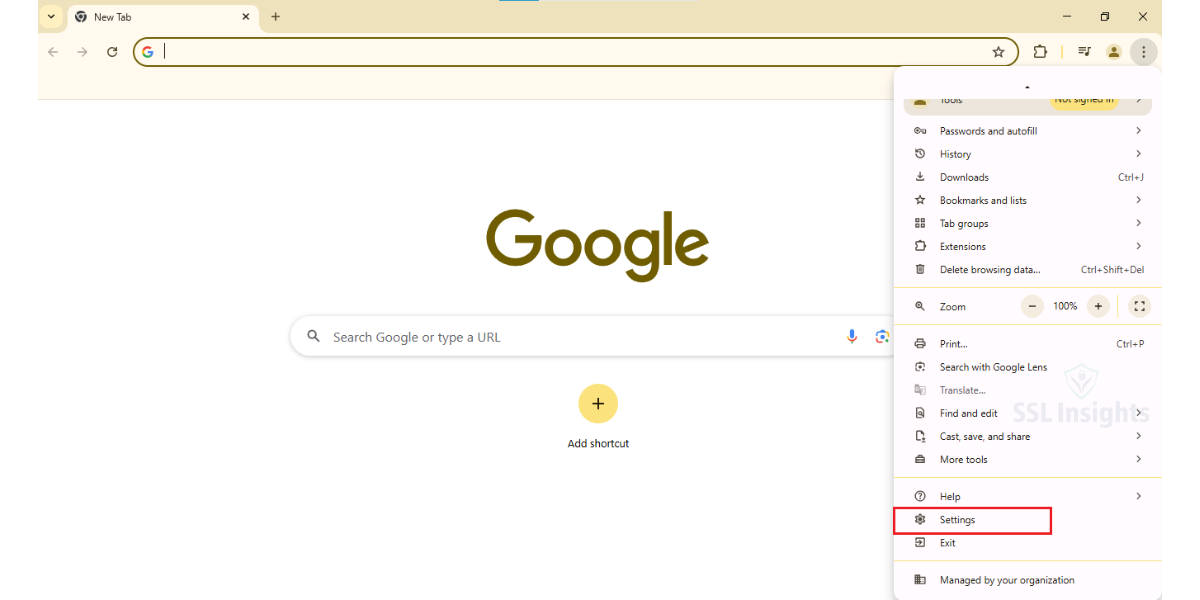
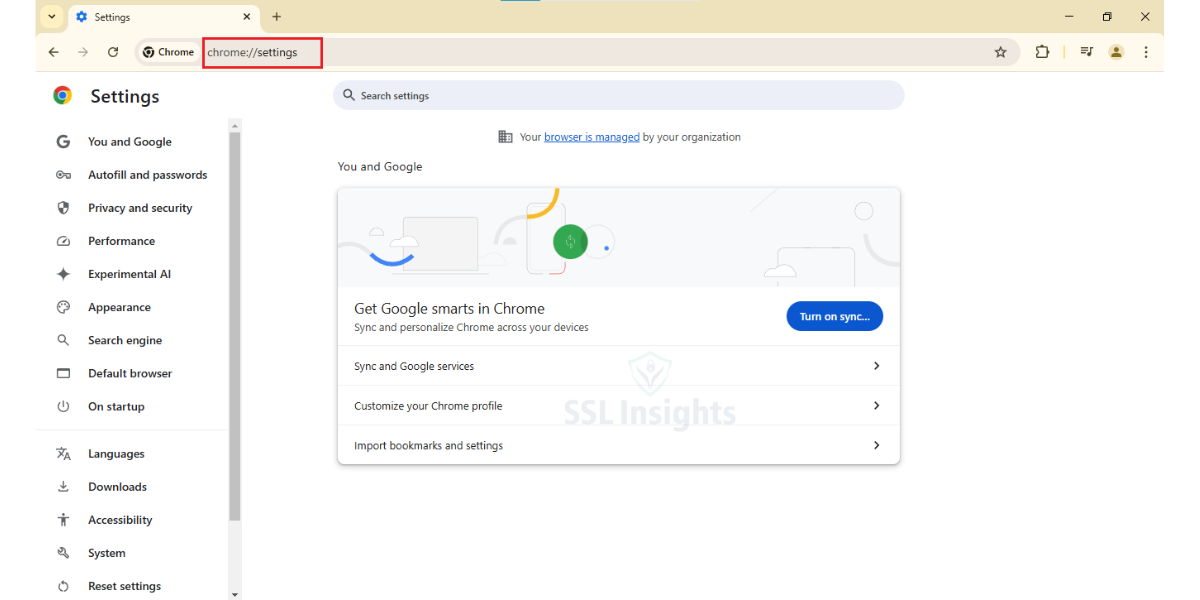
- Click on Privacy and Security or directly past chrome://settings/privacy in chrome address bar.
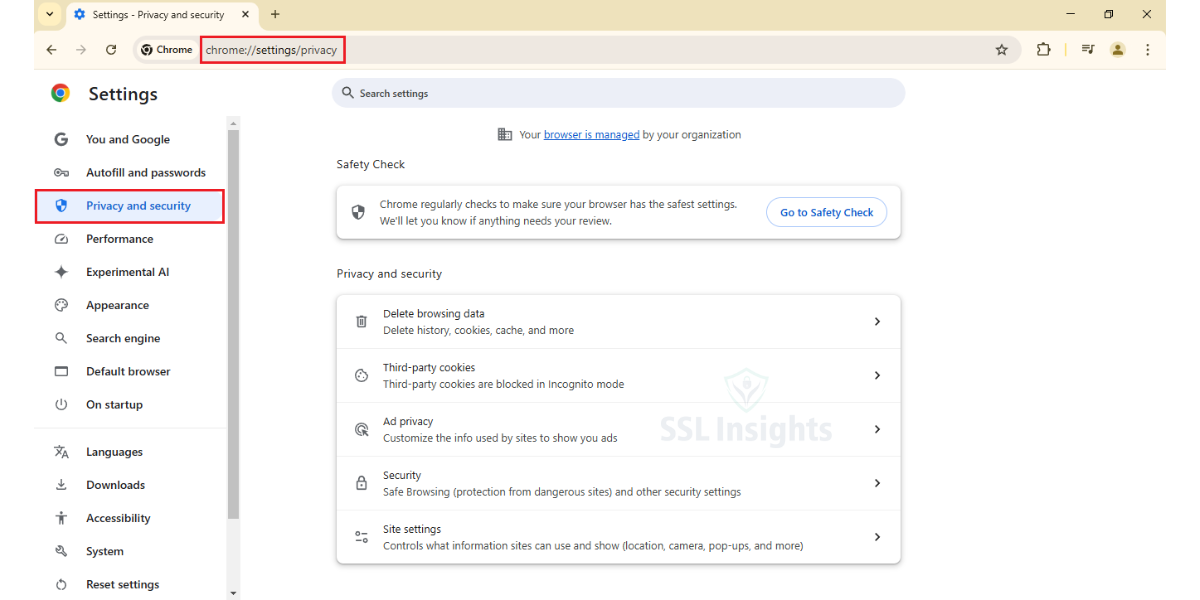
- Choose Delete browsing data option.
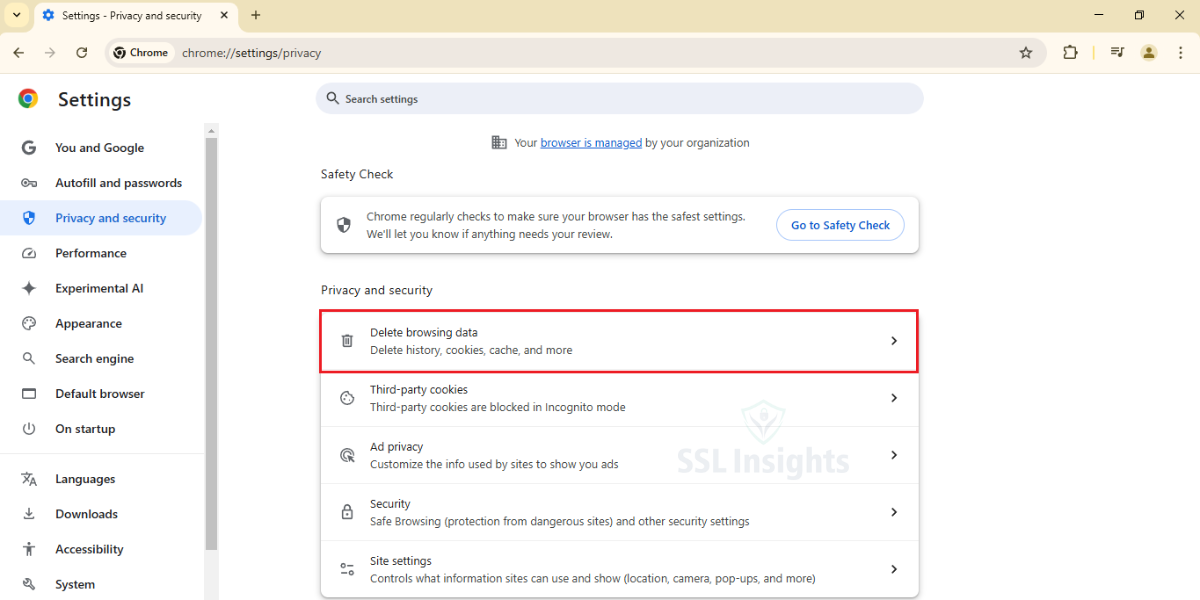
- Go to Advanced tab and Select the time range (choose “All Time” for a thorough cleanup).
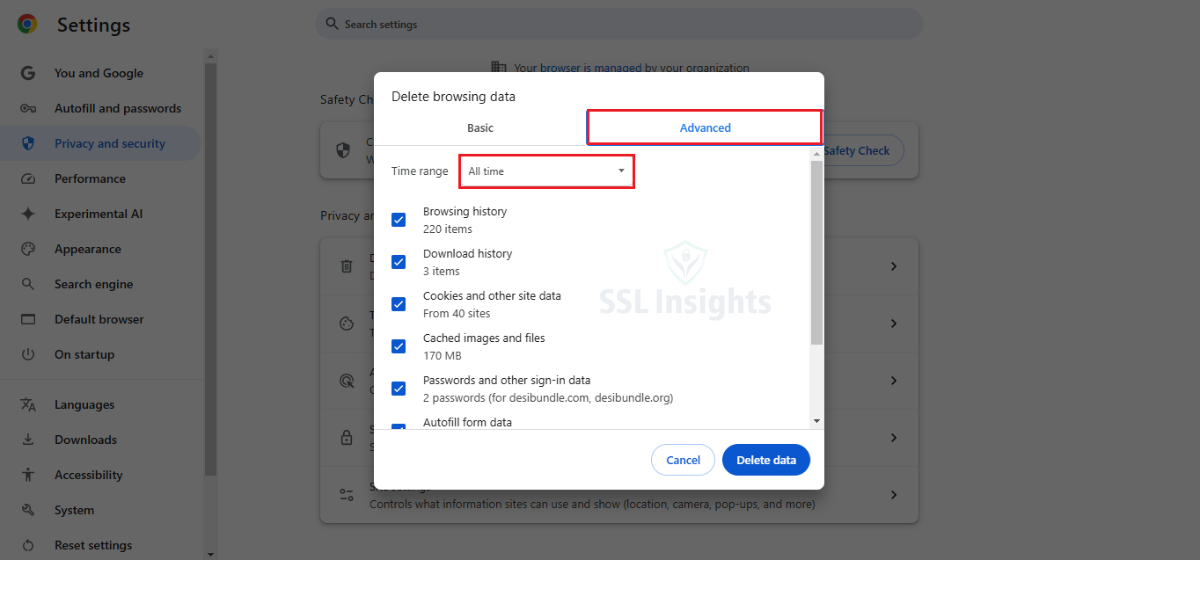
- Checkboxes for “Cookies and other site data” and “Cached images and files” should be ticked.
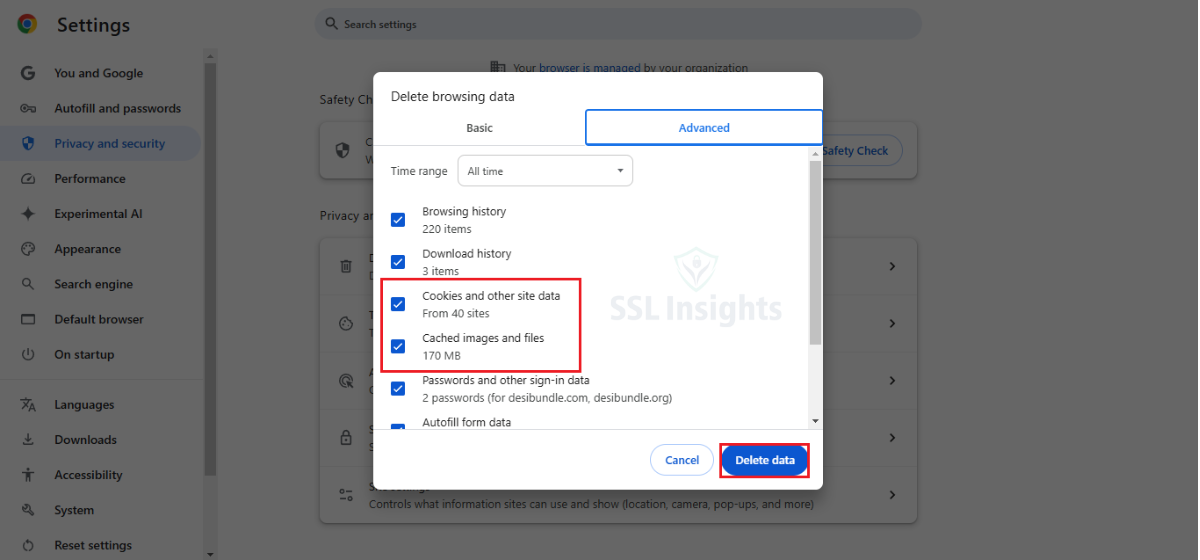
- Click on Delete data button.

Steps to Clear Cache and Cookies on Mozilla Firefox Web Browser
- Go to Settings or directly past about:preferences in firefox web address bar.
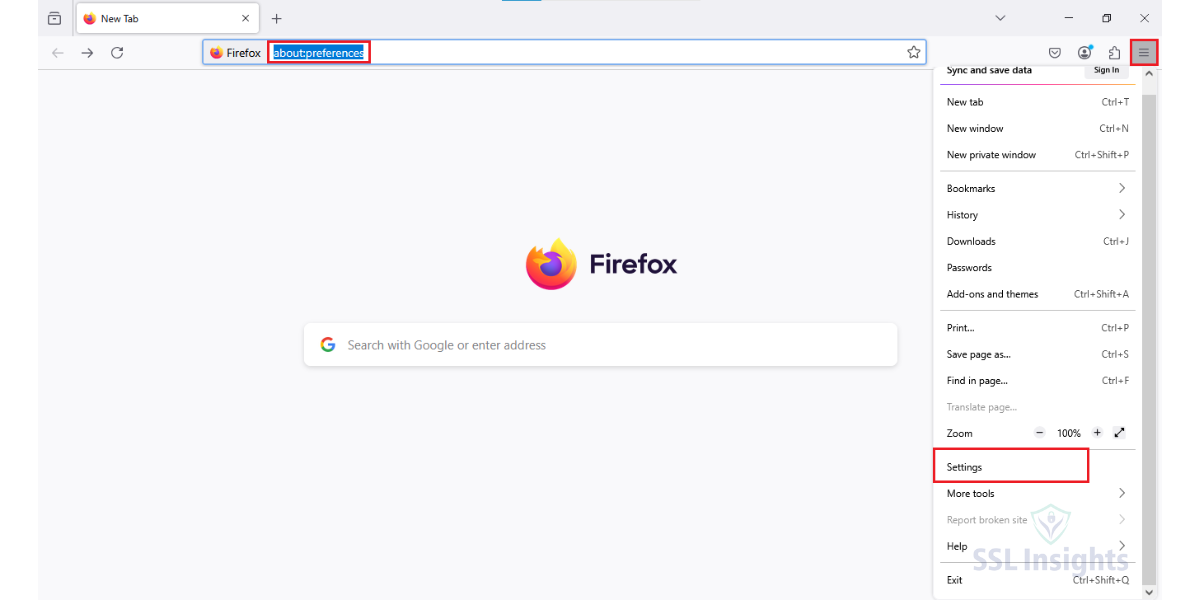
- Click on Privacy & Security option.
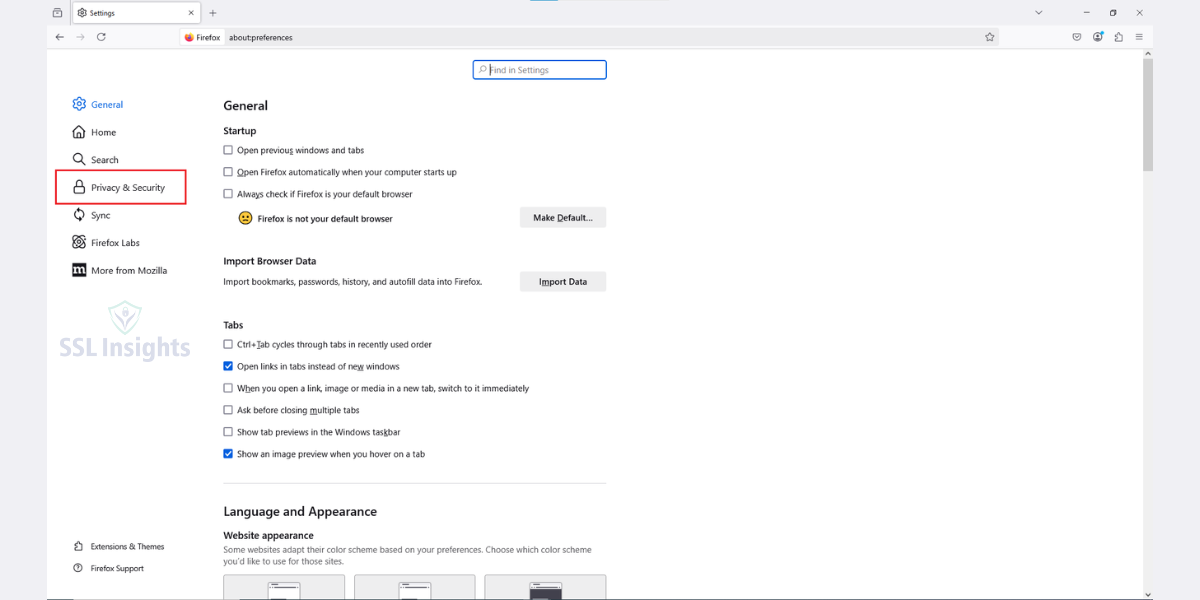
- Scroll to the “Cookies and Site Data” section and click Clear Data.
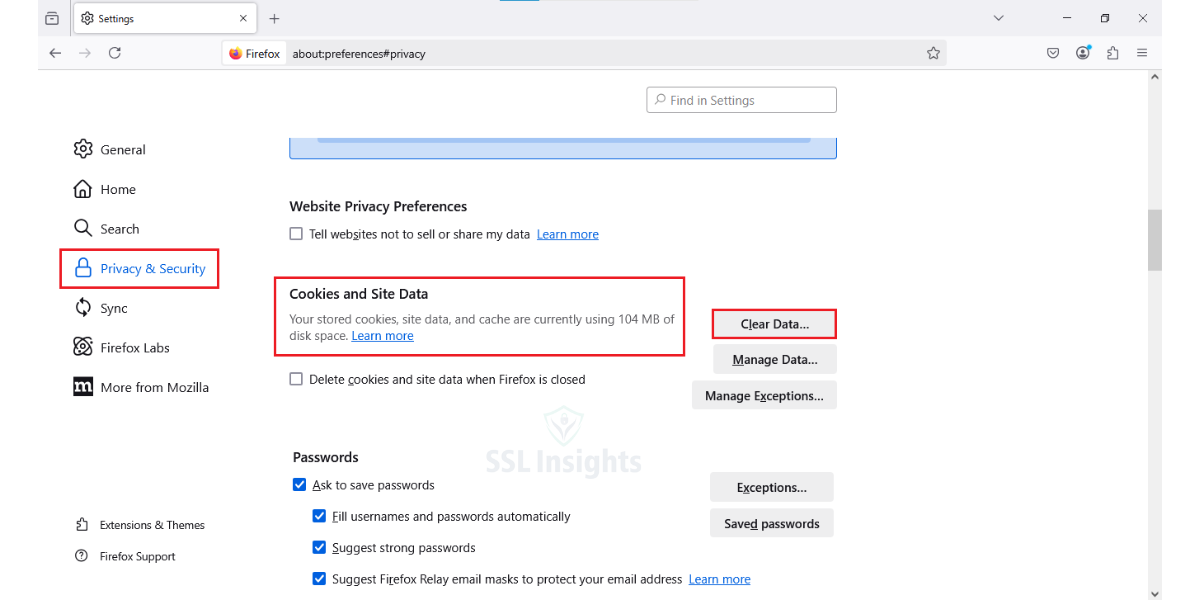
- Clear browsing data and cookies popup enabled.
- Select Everything Option and make sure Cookies and site data, Temporary cached files and pages options are enabled/checked.
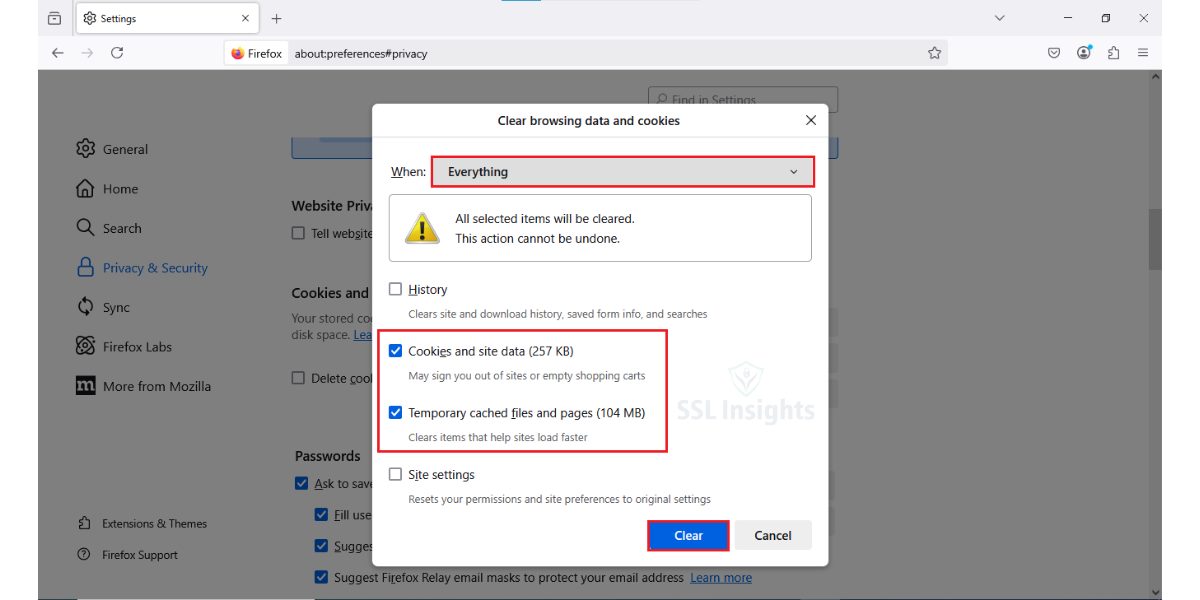
- Click on Clear Button.
Step 3: Disable Problematic Extensions
Some browser extensions, especially ad blockers or privacy tools, can interfere with HTTP/2 connections.
To identify the problem:
- Open your browser and disable all extensions.
- Try reaccessing the website.
- If the error disappears, re-enable extensions one by one to find the culprit.
Step 4: Check Your Firewall or Antivirus Settings
Security software is vital, but sometimes, it can be overly cautious. Try temporarily disabling your firewall or antivirus to see if that resolves the problem.
How to disable Windows Firewall:
- Open the Control Panel and go to System and Security > Windows Defender Firewall.
- Click on Turn Windows Defender Firewall on or off.
- Disable the firewall for both private and public networks.
- Don’t forget to re-enable it once you’ve tested the site.
Step 5: Investigate Server-Side Issues
If the problem persists, it might be server-related. Here’s what you can do:
- Contact the Website Admin: Contact the site’s admin and report the issue. They may need to check their server settings, SSL/TLS configuration, or HTTP/2 compatibility.
- Use Online Tools: Services like SSL Checker can help you analyze the website’s SSL/TLS implementation for potential misconfigurations.
Step 6: Switch to a Different Network
Sometimes, the issue is tied to your network. Try connecting to a different Wi-Fi network or use your mobile data to see if the error clears.
Step 7: Reset Your Browser Settings
If all else fails, resetting your browser to its default settings can often resolve persistent issues.
For Chrome users:
- Go to Settings > Reset and clean up > Restore settings to their original defaults.
- Follow on-screen prompts to reset.
For Firefox users:
- Go to Help > More Troubleshooting Information.
- Click on Refresh Firefox.
Final Thoughts
The ERR_HTTP2_PROTOCOL_ERROR can be frustrating, but it’s entirely fixable. Whether it’s as simple as updating your browser or as involved as tweaking server settings, this guide has you covered with actionable steps. Remember, addressing the root cause is key to ensuring the error doesn’t come back to haunt you.
By following these steps, you’ll resolve the issue and better understand how HTTP/2 works.
FAQs: Common Questions About ERR_HTTP2_PROTOCOL_ERROR
What does ERR_HTTP2_PROTOCOL_ERROR mean?
This error indicates a problem with the HTTP/2 protocol communication between your browser and a website’s server. It can result from many factors, including outdated browsers or server misconfigurations.
Can an HTTP/2 error fix itself?
In rare cases, the issue may be resolved if temporary server outages cause it. However, the best way to address it is to take proactive steps.
Is this error browser-specific?
Yes, it primarily affects browsers like Chrome, Firefox, and Edge. However, the troubleshooting methods are similar across all major browsers.
Can antivirus software cause this problem?
Yes, some antivirus programs or firewalls might block HTTP/2 connections, resulting in this error.
Is it safe to disable HTTP/2?
Disabling HTTP/2 may temporarily resolve the error, but it’s not recommended as a long-term solution. HTTP/2 offers significant performance enhancements over HTTP/1.1.
How do I know if the issue is server-side?
You can use tools like Pingdom or SSL Labs to analyze the server setup. If the issue persists across multiple devices or networks, it’s likely server-side.

Priya Mervana
 Verified Web Security Experts
Verified Web Security Experts
Priya Mervana is working at SSLInsights.com as a web security expert with over 10 years of experience writing about encryption, SSL certificates, and online privacy. She aims to make complex security topics easily understandable for everyday internet users.
